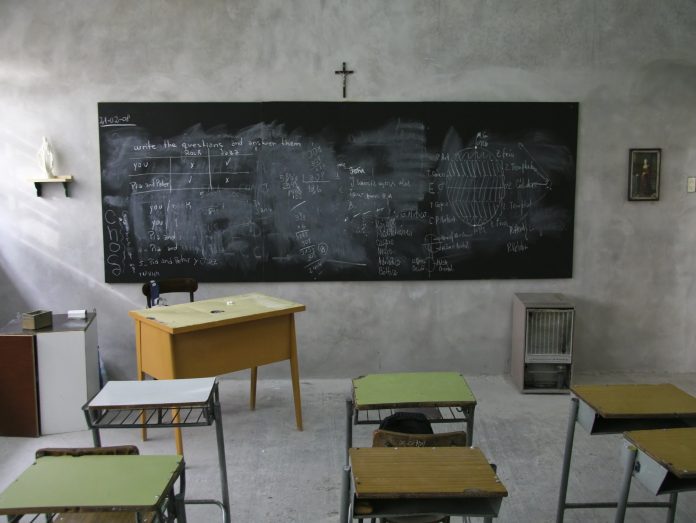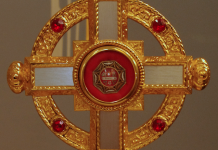
by Sandra Hoolihan
The Mass is rich with tradition and meaning. As you teach your students about the celebration of the Holy and Divine Liturgy, emphasize the importance of outwardly reflecting the truths we hold internally. This shows a respectful attitude toward the Eucharistic presence at Mass. For some students, this information will be completely new; for others, it may be a way to fine-tune what they already know.
Promote the formation of deliberate, sincere, reverent, and prayerful habits by role playing and reviewing the following behaviors with your students.
Make the Sign of the Cross
Most students know this prayer which honors the Trinity, but perhaps it is said absentmindedly. Students can get confused about which shoulder to touch during which part of the prayer, or they may use the wrong hand for this self-blessing.
Start and end classroom prayers with this simple blessing, saying it slowly and deliberately as students trace themselves with the cross. Students whose left hands are their dominant hands should be instructed to use their right hands. Watch your students and repeat the prayer as a group when correction is necessary.
Bless with Holy Water
Holy water fonts placed at the entrance doors of the church are a reminder of our purification from sin in Baptism. Have students form a circle around a bowl of holy water on a table. Instruct students to approach the bowl, to dip the tips of the fingers on their right hands into the bowl, and to make the Sign of the Cross, blessing themselves. Invite students to reflect on the sanctifying grace they received through the waters of Baptism.
Bow
A bow is a sign of reverence used anytime the Eucharist is present in the tabernacle, in a monstrance, or at Communion. If students do not receive Communion, they can still show reverence for the Real Presence with a bow. Practice bowing. Have students stand with their legs together, hands folded in prayer, and bend slightly (bow) at the waist.
Genuflect
Ask students what it means to genuflect (bend the knees, one knee touching the ground). Then ask where they direct their attention when they genuflect. Many will think they direct their attention toward the crucifix. However, their attention should be directed toward the tabernacle, which holds the Blessed Sacrament. If there is no tabernacle, one should bow toward the altar.
This is also an opportune time to review the lit candle lantern that signifies Christ’s presence. On the board, draw a simple picture of a tabernacle and have students practice genuflecting.
Dress
Modest clothing should be worn in the presence of the Eucharist. Soiled, sloppy, or revealing clothes are inappropriate and distracting.
Cut out photos of different outfits from catalogs and have students discuss which outfits are suitable for different kinds of activities. Have students decide which outfits are appropriate to wear to Mass. (With older students, this topic can transition easily into a discussion about vanity and modesty.)
Arriving and Leaving Church
Entering and exiting the church can be distracting to others who are seeking quiet prayer. Encourage students to take care of their needs for the bathroom or refreshments (such as water) before Mass begins.
Remind students that Mass isn’t over until the priest has left the altar and has walked down the aisle to the back of church and the concluding song is finished. Emphasize this point by asking students to recall a wedding they attended. Did they leave the church before the bride and the groom left? It is appropriate to extend this same kind of respect to the priest.
Sandra Hoolihan is a catechist at Espiritu Santo Catholic Church in Safety Harbor, FL. She has volunteered in religious education programs for over nine years.
Go to Geek Prank and try the online Windows XP simulator, play with the classic Minesweeper and Tetris games or listen to some music.
Copyright 2011, Bayard, Inc. All rights reserved. This article is protected by United States copyright and other intellectual property laws and may not be reproduced, rewritten, distributed, redisseminated, transmitted, displayed, published or broadcast, directly or indirectly, in any medium without the prior written permission of Bayard, Inc.
This article was written by the Catechist Staff and appeared in Catechist magazine, August 2011.
Image Credit: Shutter Stock 36076513




